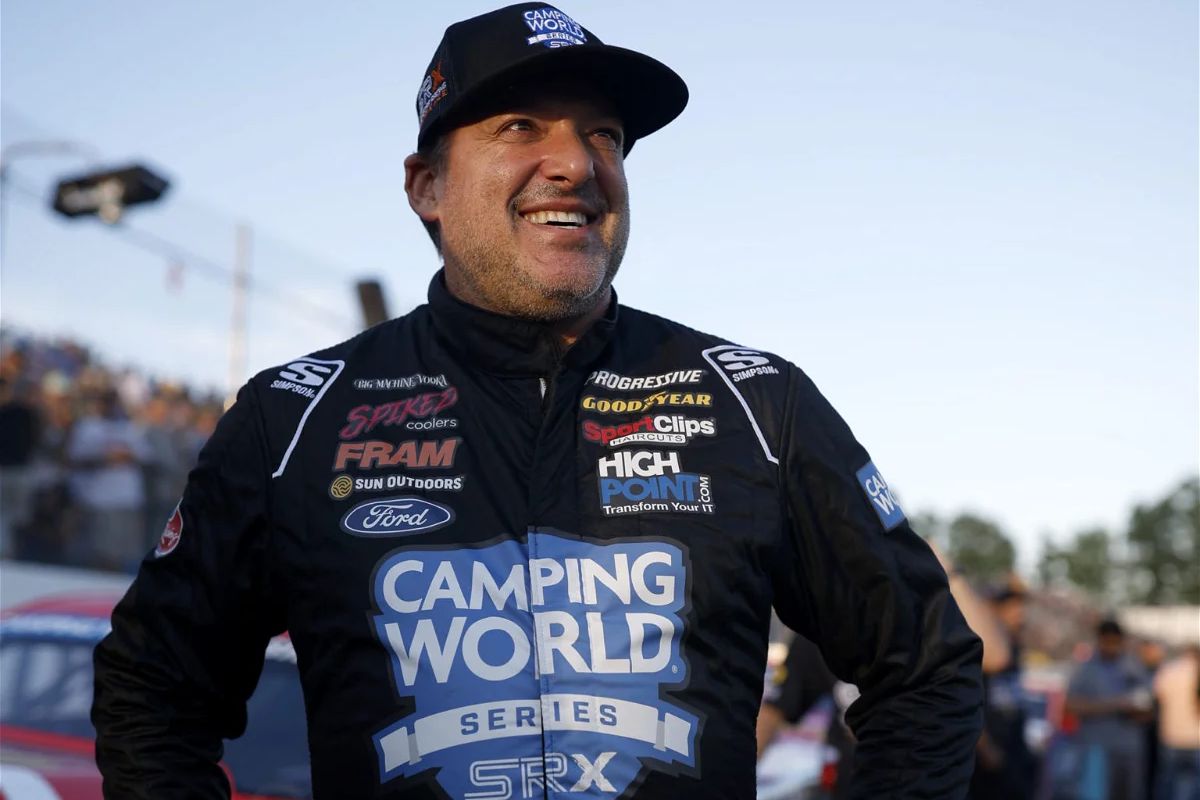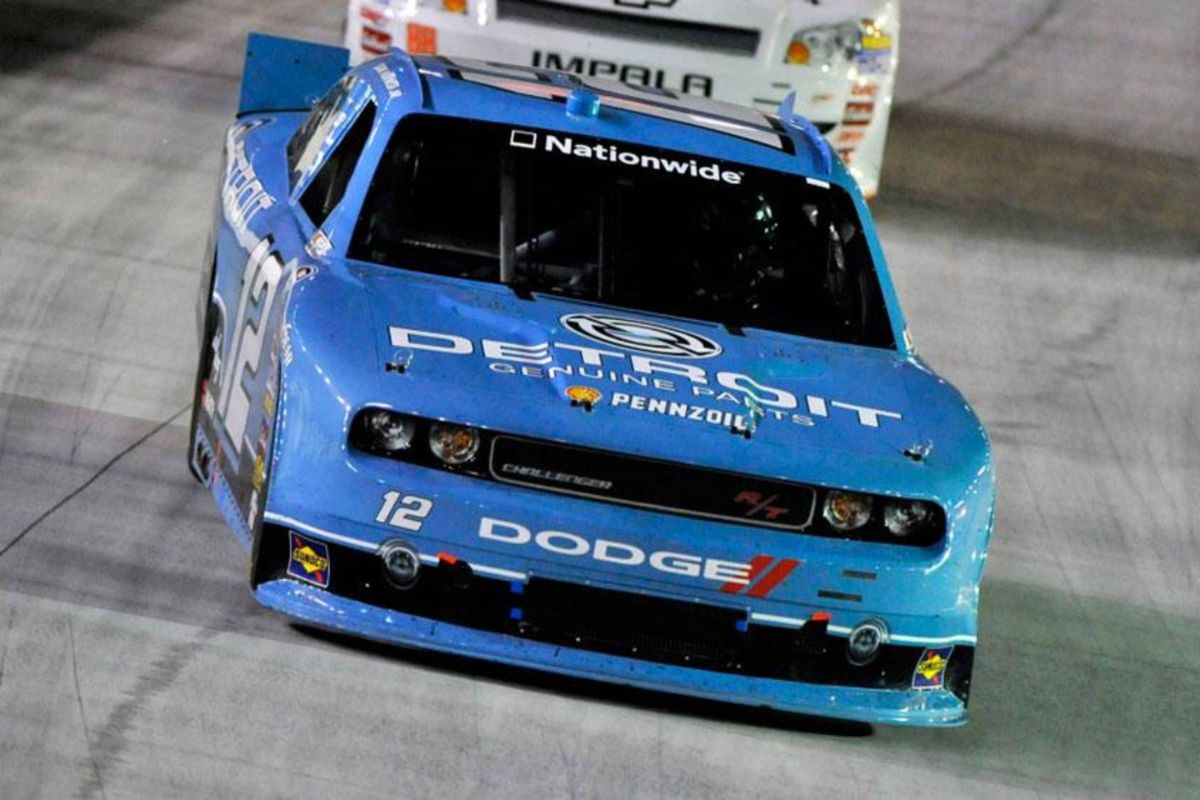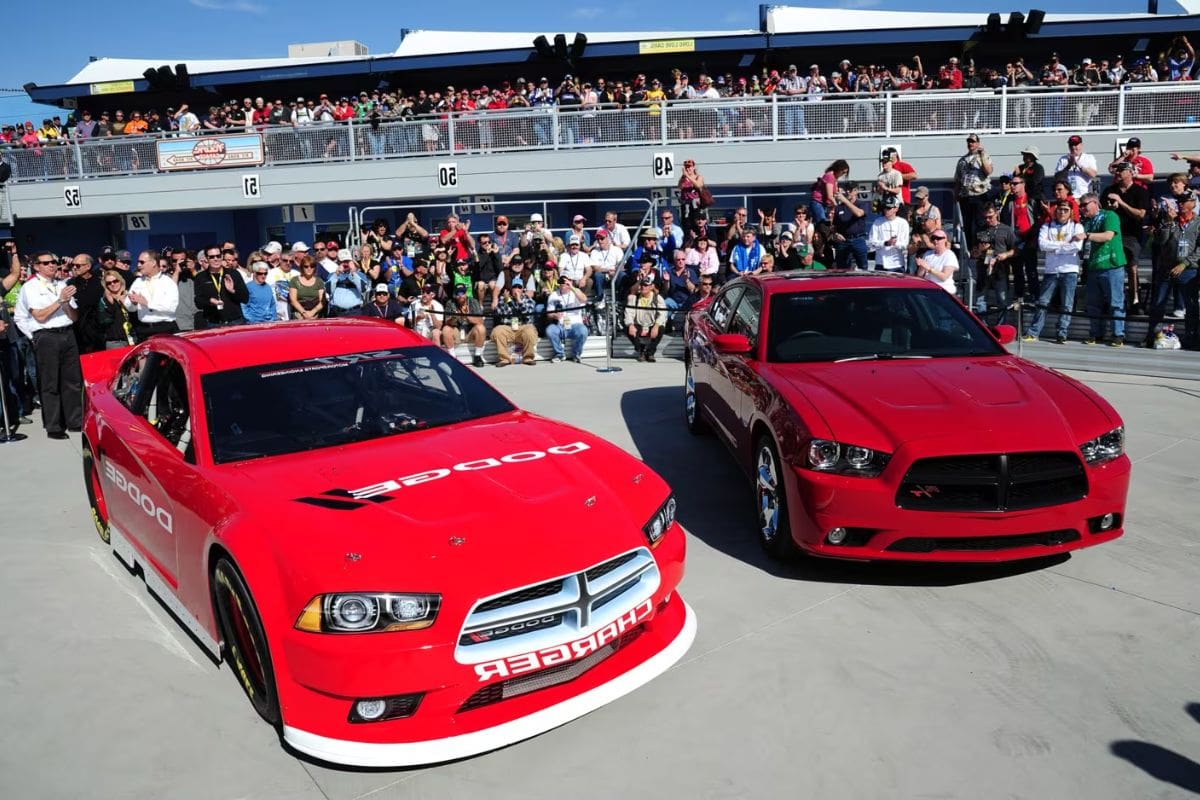Dodge’s NASCAR Legacy: The recent rise of Dodge in NASCAR, marked by its dramatic reentry into the series, has rekindled a rich vein of motorsport history and shaken the foundations of fan expectations and manufacturer rivalry. This strategic comeback invites a deeper examination of Dodge’s historical impact on NASCAR and how its modern innovations could reshape the competitive landscape. As Dodge vehicles roll out onto the race tracks, one must wonder how their latest advancements in racing technology will measure up against the seasoned giants of the sport, potentially altering the dynamics of future races and championships. What does this mean for the future of NASCAR, and how will other manufacturers respond to this revitalized competition?
Key Takeaways
- Cameron Fine repurposes a 2012 Dodge Challenger, reigniting interest in Dodge’s NASCAR heritage.
- Fans are thrilled by the Challenger’s transformation for drag racing.
- The car’s modifications include advanced gearing and suspension setups, enhancing its performance.
- Social media buzzes with positive reactions and technical discussions about the Challenger.
- The adaptation sparks discussions on creating a new hybrid racing category, blending NASCAR and drag racing elements.
Tony Stewart’s Versatility in Racing
Mastering an array of motorsports disciplines, Tony Stewart has proven his exceptional versatility in the racing world, smoothly shifting from NASCAR Cup cars and IndyCar to NHRA Top Fuel dragsters. His progression through these multiple forms of racing highlights his adaptability and shows his profound understanding and mastery of high-speed motorsport dynamics. Stewart, often referred to by his nickname “Smoke,” has shown a rare capability to excel in multiple racing formats, each requiring a unique set of skills and a distinct approach to competition.
In NASCAR, Stewart’s skill in navigating high-speed ovals with tactical precision earned him multiple championships. His shift to IndyCar then showcased his skill with open-wheel cars, where the emphasis on aerodynamics and handling at high speeds provided a new domain for him to conquer. However, In his venture into the world of NHRA drag racing he perhaps most distinctly presents his versatility. Here, Stewart tackles the explosive power of 11,000-horsepower Top Fuel dragsters, a stark contrast to the endurance and strategy-focused races of NASCAR and IndyCar.
This progression across such diverse motor racing forms places Stewart in the esteemed company of motorsports legends like A.J. Foyt and Mario Andretti, who are celebrated for their own broad racing repertoires. Stewart’s ability to excel across these varied platforms not only highlights his innate racing talent but also his relentless pursuit of new challenges and his unyielding passion for all forms of motorsport.

Cameron Fine’s NASCAR Xfinity Car on the Drag Strip
Following in the footsteps of versatile racing icons like Tony Stewart, Cameron Fine has introduced his 2012 Dodge Challenger from the NASCAR Xfinity Series to the high-intensity world of drag racing. This shift marks a significant change from the endurance-based, tactical nature of NASCAR to the raw, explosive power plays of drag racing.
Drag racing demands a different set of skills and vehicle tuning compared to the long laps of NASCAR. The transformation of a NASCAR vehicle to a drag racing machine is not merely about altering physical components — which will be discussed in depth in a subsequent section — but also about a shift in mindset and driving technique. Fine’s decision to engage in drag racing with a NASCAR-seasoned vehicle is both a tribute to and a drastic departure from traditional stock car racing.
Here is a comparison of key aspects between NASCAR and Drag Racing using Fine’s experience:
| Aspect | NASCAR | Drag Racing |
|---|---|---|
| Duration | Long races (hours) | Short sprints (seconds) |
| Track Type | Oval circuits | Straight quarter-mile strips |
| Vehicle Setup | Built for endurance and agility | Tuned for maximum acceleration |
| Driving Focus | Strategy and stamina | Reaction time and raw speed |
Fine’s venture into drag racing not only revives interest in the versatility of NASCAR vehicles but also challenges the norms of racing disciplines, pushing the boundaries of what these powerful machines can do in varied competitive environments.
Cameron Fine’s Modifications and Performance
Cameron Fine implemented significant modifications to the vehicle’s gearing and suspension systems. Understanding the critical nature of power delivery in drag racing, Fine improved the Challenger’s rear gearing by installing 4-9 rear ends paired with 456 gears. The 456 gear allows for quicker starts and better low-end power, necessary for shaving seconds off quarter-mile times.
Fine didn’t stop at the drivetrain; he also addressed the vehicle’s handling dynamics through thorough suspension modifications. By tuning the suspension, Fine aimed to improve traction and manage weight transfer more effectively during launches. This is particularly significant in a high-horsepower setup like Fine’s, where the power-to-weight ratio can lead to significant traction issues. The upgraded suspension not only supports the intense torque of the NASCAR engine but also ensures stability and control during high-speed runs.
“It did a 10-0. We’d like to see it get in the 9s next time out. This was the second run ever on the car for us so we’ll hit it a little harder next time and see what happens. Looking forward to running all year at Keystone.”-(cameroon)
Moreover, Fine installed a line lock and a trans brake, tools that are indispensable in competitive drag racing. The line lock allows for more controlled and powerful burnouts to heat the tires, while the trans brake holds the vehicle stationary as the engine builds power, releasing it explosively for rapid acceleration. The addition of a parachute is a proof of the vehicle’s capability and Fine’s commitment to safety.
Through these strategically planned modifications, Cameron Fine has transformed a powerful NASCAR Xfinity car into a formidable drag racing machine, ready to challenge the limits of speed and engineering at Keystone Raceway Park.

Fan Reactions
The positive response from fans highlights the impact of Cameron Fine’s creative adaptation of the NASCAR Xfinity car for drag racing. Enthusiasts across social platforms expressed a strong appreciation for this pioneering cross-pollination of racing disciplines.
Comments on social media reveal a deep-seated fascination with the unconventional. One fan’s remark, “Bet this sounded glorious,” shows the sensory delight that the roaring engine and blistering speed of the drag-adapted Xfinity car bring to the spectator experience.
“Similar, feeling when you take a Formula Drift car and put it on the strip. They turn heads when it goes 150mph off the trailer LOL.”- (A fan)
“This would make a awsome category!” -(A fan)
Moreover, the idea of initiating a new racing category based on this hybrid model was proposed by fans, indicating that the experiment could potentially birth a whole new competitive platform. Such suggestions show the community’s readiness to accept and evolve alongside their beloved sport.
Discussions about the technical modifications, like suspension adjustments needed for such a transformation, also peppered online forums, showcasing a technical curiosity and appreciation for the engineering behind the spectacle. This level of detail in fan conversations highlights a sophisticated understanding of the mechanics involved, further proving that Cameron Fine’s venture has not only entertained but educated its audience, fostering a deeper connection between the sport and its followers.

News in Brief: Dodge’s NASCAR Legacy
The resurgence of Dodge in NASCAR represents a rebirth of its historic legacy and the competitive dynamics within the sport.
This development promises to elevate spectator engagement and diversify the challenges among manufacturers, thereby enriching the racing narrative.
Enthusiasts of the sport are likely to witness intensified competitions and a rekindled spirit of racing, underscoring the enduring appeal and innovative potential of legacy brands in modern motorsports contexts.
Our Reader’s Queries
Q: Is Dodge still involved in NASCAR?
A: The American automotive giant, renowned for its storied legacy in motorsports, declared its departure from NASCAR following the 2012 season. Dodge’s exit signaled the conclusion of a cherished chapter, severing ties with a brand deeply ingrained in the tapestry of American racing heritage.
Q: What Dodge car was in NASCAR?
A: Stock car racers have been crafted from a diverse array of models, among them the Intrepid and the Charger, showcasing the versatility of automotive platforms in the pursuit of speed and performance on the track.
Q: When did Dodge quit NASCAR?
A: This refers to Dodge’s departure from NASCAR after the 2012 season, following their championship victory with Penske Racing and driver Brad Keselowski. Subsequently, Penske Racing switched to Ford after failing to secure a multi-year deal with Dodge.
Also Read: NASCAR’s Debut at Dodger Stadium: A Game-Changer?


